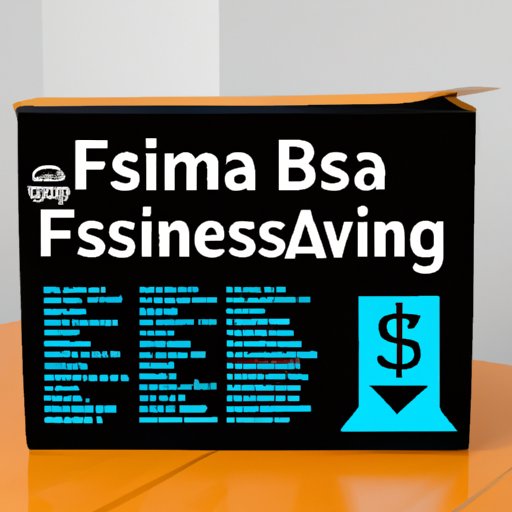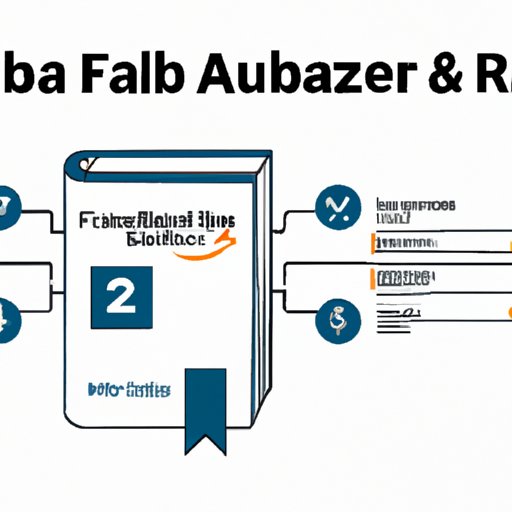Introduction
Starting a business can be a daunting task, but with the right guidance and resources, anyone can become an entrepreneur. For those looking to break into ecommerce, the Fulfillment by Amazon (FBA) business model is one of the most popular options. This guide will provide a comprehensive overview of how to start an FBA Amazon business, from research and setup to sourcing suppliers and listing products.
Definition of FBA Amazon Business Model
The FBA Amazon business model is an ecommerce platform that allows sellers to list their products on Amazon’s marketplace and have Amazon fulfill orders on their behalf. When a customer purchases a product, Amazon stores, packs, and ships it directly to the customer, taking care of all the logistics. As a result, sellers can save time and focus on growing their business instead of managing inventory and shipping.

Benefits of Starting an FBA Amazon Business
There are many advantages to starting an FBA Amazon business, including:
- Access to Amazon’s massive customer base
- No need to manage inventory or shipping
- Global reach with Amazon’s international marketplaces
- Sellers can leverage Amazon’s fulfillment services and prime shipping
- Low startup costs and minimal risk
Research the FBA Amazon Business Model
Before jumping into the world of ecommerce, it is important to do your research. You should gather information about the FBA Amazon business model, analyze the competition, and evaluate the potential of the market you are entering.
Gather Information
Start by reading up on the FBA Amazon business model and familiarizing yourself with the various features and benefits. Look into the different types of accounts available and decide which one is best suited for your needs. Also, keep up with industry news and trends so you can stay informed of any changes or updates.
Analyze Competition
It is also important to analyze the competition. Take a look at what other sellers are doing and how they are succeeding. Pay attention to pricing, product selection, and customer reviews. This will give you an idea of what is working and what areas you may need to improve upon.
Evaluate Market Potential
Finally, you should evaluate the potential of the market you are entering. Is there enough demand for the products you plan to sell? Are there any competitors in the same space? Are there any barriers to entry that you may need to overcome? Answering these questions will help you determine if the FBA Amazon business model is a good fit for you.
Create an Amazon Seller Account
Once you have done your research and decided that the FBA Amazon business model is the right choice for you, it is time to create a seller account. Here are some things to consider when setting up your account:
Understand Seller Account Options
Amazon offers two types of seller accounts: Individual and Professional. The Individual account is free to set up, but comes with selling limits and fees. The Professional account has a monthly subscription fee, but offers more features and higher selling limits. Consider which account type best fits your needs before signing up.
Set Up Your Account
Once you have chosen an account type, it is time to set up your account. You will need to provide basic contact and financial information, as well as choose a payment method. You will also need to agree to Amazon’s terms and conditions and sign up for any additional services you may need.
Ensure You Meet Amazon Requirements
In order to sell on Amazon, you must meet certain requirements. These include having a valid tax ID, proof of identity, and a valid credit or debit card. You will also need to provide documentation proving that your products meet Amazon’s safety and quality standards. Make sure you have all the necessary documents before submitting your application.
Develop a Product Strategy
Once you have set up your account, it is time to develop a product strategy. Here are some things to consider:
Identify Target Audience
Think about who your target audience is and what kind of products they would be interested in. Do some market research to get an idea of what is already being sold and what new products you may be able to offer. Consider your budget and the resources you have available to you when deciding what products to sell.
Choose Products to Sell
Once you have identified your target audience, it is time to choose the products you want to sell. Look for products that are in high demand and have a low competition rate. Consider items that are easy to source and have a good profit margin. Also, make sure the products you choose meet Amazon’s quality and safety standards.
Analyze Pricing
Pricing is an important factor when selling on Amazon. You want to make sure you are competitively priced, but still making a profit. Analyze the prices of similar products on Amazon and adjust yours accordingly. Also, take into account any additional fees you may incur, such as shipping and storage costs.
Source Products and Suppliers
Once you have chosen the products you want to sell, it is time to find suppliers. Here are some things to consider when sourcing suppliers:
Find Reputable Suppliers
It is important to find reputable suppliers who can provide quality products at a fair price. Research potential suppliers and read customer reviews to get an idea of their reputation. Make sure they have a good track record and have been in business for a while.
Negotiate Price and Shipping Terms
Once you have found a supplier you are comfortable with, it is time to negotiate price and shipping terms. Make sure you get the best deal possible and that the terms are clearly outlined in a written contract. Also, find out if the supplier offers any additional services, such as packaging or labeling.
Investigate Manufacturing and Quality Standards
When sourcing products, you also need to investigate the manufacturing and quality standards of the supplier. Make sure the products meet Amazon’s requirements and are of good quality. Ask for samples and inspect them thoroughly before placing an order.
Follow Amazon’s Rules and Regulations
When selling on Amazon, it is important to follow all of the rules and regulations set forth by the company. Familiarize yourself with Amazon’s policies and make sure you comply with any laws and regulations in your area.
Familiarize Yourself with Amazon Policies
Take the time to read through Amazon’s policies and guidelines. This includes the agreement you signed when creating your account, as well as any additional policies related to selling on the platform. Make sure you understand all the rules and regulations before listing any products.
Comply with Laws and Regulations
In addition to Amazon’s policies, you must also comply with any laws and regulations in your area. This includes taxes, labor laws, and product safety standards. Make sure you are up to date on all relevant laws and regulations before launching your business.

List Your Products on Amazon
Once you have sourced your products and followed all of Amazon’s rules and regulations, it is time to list your products on the platform. Here are some tips for creating successful product listings:
Create Product Listings
Creating product listings is the first step in getting your products noticed. Include detailed descriptions, accurate pricing, and multiple images. Also, make sure the product titles and descriptions are optimized for SEO to maximize visibility.
Utilize SEO Strategies
Using SEO strategies can help increase your product’s visibility and ranking on Amazon. Use relevant keywords throughout your product listings and include them in the title, description, and product images. Also, use backlinks to direct customers to your product pages.
Design Eye-Catching Images
Product images play an important role in attracting customers. Make sure the images are high-quality and accurately represent the product. You can also add text or logos to the images to make them stand out and draw attention to your brand.

Optimize Your Listings for Maximum Visibility
Once your products are listed on Amazon, you can optimize your listings for maximum visibility. Here are some tips for increasing your product’s visibility:
Use Amazon Advertising
Amazon offers several advertising programs that allow you to promote your products and increase visibility. Try experimenting with different campaigns to see which ones work best for your products.
Leverage Social Media
Social media is another great way to promote your products and increase visibility. Create profiles on various platforms and share links to your product pages. You can also run targeted ads and engage with customers to build relationships.
Monitor Performance Metrics
It is important to monitor your performance metrics and tweak your strategy as needed. Track your sales, customer reviews, and advertising campaigns to see which ones are performing the best. This will help you optimize your listings and maximize visibility.
Conclusion
Starting an FBA Amazon business is a great way to break into the world of ecommerce. By doing thorough research, setting up a seller account, developing a product strategy, sourcing suppliers, following Amazon’s rules and regulations, listing products, and optimizing listings for maximum visibility, you can create a successful business on the Amazon platform.
With the right guidance and resources, anyone can become an entrepreneur. We hope this guide has provided you with a comprehensive overview of how to start an FBA Amazon business.
(Note: Is this article not meeting your expectations? Do you have knowledge or insights to share? Unlock new opportunities and expand your reach by joining our authors team. Click Registration to join us and share your expertise with our readers.)
